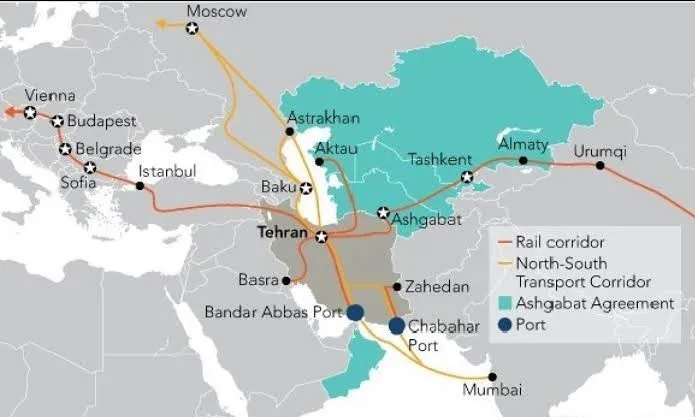Iran’s INSTC Rasht-Astara Railway Bottleneck Problem To Finally Be Resolved
Questions over applicable rail gauge usage have delayed completion
Tehran expects to sign an agreement with Russia on the completion of the Rasht-Astara railway section in Iran and start construction in the near future, Kazem Jalali, the Iranian Ambassador to Russia said, speaking at the Caucasus Investment Exhibition on Wednesday (May 3).
The Rasht-Astara link is the final part of the Iranian INSTC railway that connects the route between Iran’s Caspian Sea ports and its Persian Gulf ports. Completing it will allow full functionality of the INSTC rail links.
Jalali said “I must convey the good news that in the very near future an agreement will be signed on the construction of the Rasht-Astara railway section with the help of Russia, and this project will be transferred to an operational, practical plane. I think that within three or four months, maximum October, the execution phase for implementation of this INSTC North-South corridor project will be launched.”
In March, Sergey Pavlov, the first deputy head of Russian Railways, also said that Russian Railways was expecting the signing of intergovernmental agreements on the completion of the Rasht-Astara railway line this year. The Russian Ministry of Transport is preparing two intergovernmental agreements: Iran-Russia and trilateral Azerbaijan-Russia-Iran.

Answering the question of how much the construction of the site is estimated to cost, Pavlov reported that “the approximate calculation now being considered is US$1.6 billion.” There are plans to build both narrow and wide-gauge tracks in this section.
“There were negotiations, including at the highest level, and a decision was made to build a section of the Rasht-Astara line on a combined gauge. That is, they plan to lay both 1,435 mm rails, the current standard in Iran, and 1,520 mm rails, the Russian gauge. But first, 1,435 mm rails will be laid in order to use the existing infrastructure and move as quickly as possible,” he stressed.
The International North-South Transport Corridor (INSTC) connects India and South Asia via Iran to Central Asia, the Caucasus and Turkiye, on to Europe and north to Russia. It is a faster and cheaper alternative to the Suez Canal.
Related Reading





